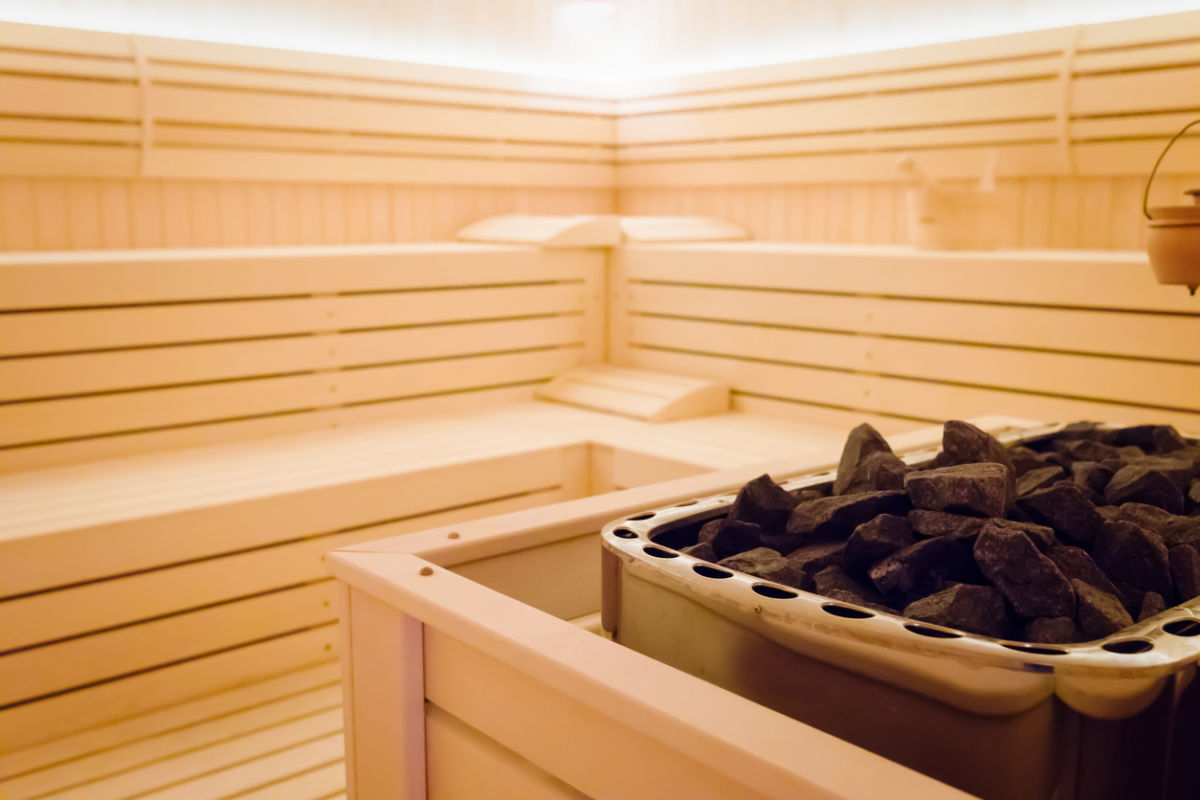Do you want to relax and unwind with a sauna session? Selecting the right sauna heater is essential for your health and comfort.
In this guide, we’ll share all you need to know about buying a sauna heater so that you can make an informed purchase decision. You will be able to pick the perfect model for your needs and enjoy your sauna sessions with peace of mind!
The sauna is an age-old tradition that is practiced throughout the world. It offers a range of benefits to those who use it, including relaxation, increased circulation, improved skin tone and overall well-being.
For those who are interested in investing in a sauna heater, there are a few things that should be taken into consideration before making a purchase. This guide will provide an overview of the different types and features of sauna heaters available on the market today, as well as tips for choosing one that will meet your needs.
With the right information and careful selection process, you can find the perfect sauna heater for your home or commercial use.
Explanation of what a sauna heater is
A sauna heater is an integral component of a traditional sauna, adding warmth and creating a steamy environment. The most common heater types are electric and wood-burning. Electric heaters often offer greater speed in reaching a desired temperature, yet can be more expensive to operate. Wood-burning stoves require more time to reach the sauna’s desired temperature, but some say that the wood aroma and heat make the sauna experience even better.
Sauna heaters also come in various shapes and sizes with different heating elements, settings, thermostats, timers and emissions outputs. Your selection of a sauna heater should take into account the type of sauna you want it for (infrared or traditional) as well as how energy efficient it is, how much BTU output it provides, what safety features are available (like overheat protection) and your budget. This guide provides insight into these topics so that you can find the right sauna heater for your installation!

Features to Look for in a Sauna Heater
When shopping for a sauna heater, there are a few key features to take into consideration as they can affect the comfort and overall quality of your sauna experience. Some factors to consider include:
- Size: Most saunas use either electric or wood-burning heaters. Electric heaters are typically more compact and easier to install than wood-burning models. The size of the heater will determine how many people the heater can accommodate, so be sure to measure the space before selecting a model that is too large or small for your sauna.
- Heating Capacity: You’ll need to choose from either a low or high wattage heating capacity based on your desired temperature setting and total number of bathers in your sauna room at one time. Generally, electric heaters require more power than wood-burning models for higher temperatures in larger spaces; however, you can always opt for multiple smaller electric units if space requirements limit you from getting one big one.
- Design: Depending on the aesthetic look you’re trying to achieve in your indoor or outdoor sauna space, you’ll want to choose a design that is both pleasing and efficient for the environment you’re creating. Look at variations of materials such as aluminum or stainless steel to find models with various decorative themes and designs which could match existing decor in bathrooms and other living areas adjacent or adjacent to the sauna area itself.
- Control System: Temperature control systems vary between units but generally involve some type of adjustable thermostat or timer which helps ensure accuracy when adjusting how hot you would like your sauna to be while providing additional energy savings over time by limiting unnecessary usage beyond what is actually needed based on usage demands at any given time by various members in the household using it throughout its lifetime under normal conditions according those users during those times periods comfortably when desired by them with support of this feature adding value for all users in that environment including convenience only being limited thusly as it relates specifically t this feature from an operational standpoint respectively in itself regardless accordingly relative similarly directly proximal up until naturally thusly similarly alternatingly correlated equally together companionably initially before changing automatically via any type associated manner related alike thereby connotatively forming part therefore theirout throughout its existence until such time updated accordingly adjusted subsequently equitably consequently dutifully therefore agreed upon amongst those users actively not admittedlyed engaged yet relatively.
Temperature control
When it comes to sauna heaters, temperature control is key. It’s important to choose a unit that offers precise and reliable temperature control. Different models offer various features, such as digital controls with LED readouts and programmable settings, or dial controls with toggle switch settings.
Electric heaters are larger and generally easier to set up than wood-burning heaters, but they don’t retain heat as long. Make sure your heater has all the safety features you need, such as thermal overload protection or overheat shut-offs.
Wood-burning sauna heaters offer an economical advantage; however, they require more maintenance and can be difficult to light without proper instruction.
Once you understand the features of each type of heater and determine your heating needs, shop around for the best deal on a quality product from a trustworthy manufacturer.
Durability
Durability is always an issue when you’re buying any product, and sauna heaters are no different. Look for a unit that’s constructed from corrosion-resistant materials, such as stainless steel. This will provide greater protection against rust and corrosion over the years.
You should also look for a heater that has been designed with safety in mind, with limited exposed wiring and components and an automatic shut-off feature built in. As an additional measure of safety, make sure you purchase your sauna heater from a reputable source with good customer reviews, preferably one that offers solid guarantees on the products they sell.
Safety features
When buying a sauna heater, it is important to familiarize yourself with the various safety features. This is critical for the safety of all users and should be a top priority for anyone looking to purchase a sauna heater.
Sauna heaters are available with several safety features including temperature limiters, overheat protection shut-off switches, air-flow sensors and manual reset switches. Temperature limiters help to prevent excessive heating in the sauna and overheat protection shut-off switches turn off the heater automatically if it detects an excessive heat buildup in the room. Air-flow sensors sense changes in airflow that could indicate an inadequate removal of heat which can then trigger the unit to adjust its output accordingly. Manual reset switches allow users to manually override preprogrammed setpoints if needed.
It is essential that all users read and understand the manufacturer’s instructions prior to use, as not doing so can lead to serious injury or death from burns or fires caused by improper heating system operation.

III. Installation and Maintenance of Sauna Heaters
Before installation and use, you must read the manufacturer’s product details, instructions, and safety precautions carefully. Installation of sauna heaters should be done according to strict building regulations and manufacturers’ instructions, so you should always seek the help of a qualified professional.
When it comes to maintenance, it is important to inspect your sauna heater at least once a year to make sure that all electrical connections are secure and that the sauna chamber is free of dust and debris. Regular cleaning with a damp cloth is required for wood-burning sauna heaters, while electrical ones require an annual maintenance check from a certified electrician for safety reasons. Proper ventilation is also important in order to reduce the risk of fire or the buildup of carbon dioxide from unburned fuel. Additionally, temperature should never exceed 200°F (93°C), as this can cause warping or cracking of surrounding materials.
Installation considerations
When it comes to sauna heaters, there are several installation considerations that should be taken into account prior to making a purchase. In order to properly install a sauna heater, you must take into consideration the size of your sauna space, the goals and objectives you wish to achieve when building your own personal oasis, and the type of heating system you want installed.
The first factor to consider is the amount of space required for proper installation. Additionally, all electrical components and wiring must be certified safe by an electrician or certified technician. All wiring must be kept 6 inches away from any combustible materials at all times. Furthermore, installing a sauna heater requires access to an air ventilation system that can ensure proper air circulation inside the sauna, as well as maintain correct temperatures for comfort and safety.
When selecting a heating system for your sauna room, it is important to know what type of sauna heater will suit you best — either wood-burning or electric. Wood burning heaters are more efficient than electric heaters at retaining their heat and provide a natural aesthetic through wood burning aromas that many people enjoy. On the other hand electric heaters are produced from more durable materials than wood burners and don’t require any fuel – making them much easier to maintain over time. Whichever type of system you go for will depend on your needs and preference; however both operate on similar principles involving internally heating up metal plates (in the case of electric) or stones (in the case of wood-burning systems) which then warm up surrounding surfaces in order create heat energy in an enclosed area such as a sauna room.
Electrical requirements
Power usage and wiring requirements vary, depending on the type of sauna heater being used. You need to make sure that your home’s electrical system is designed to handle whatever heater you choose. For example, most 240v electric sauna heaters require a dedicated electrical line with a 20-amp breaker and 12-gauge wiring. This ensures the highest level of performance and safety. If you’re not sure about your electrical system requirements, consult with a qualified electrician for advice before making any purchase decision.
In addition to power requirements, it is also necessary to consider your existing roof and wall structure when choosing a sauna heater and constructing the walls of the sauna room itself. Some units require special installation procedures or building materials which could be more costly than anticipated if they must be purchased separately. Having knowledge of these additional factors helps ensure you get everything needed for proper installation as well as assistance in troubleshooting should an issue arise during or after installation is complete.
Maintenance requirements
For any sauna heater, regular maintenance requirements should be considered to ensure that it is functioning correctly and safely. Depending on the type of heater chosen, specific care instructions should be carefully followed.
Wood-Burning Saunas
-Ensure adequate ventilation for the stove at all times
-Check chimney for proper draft
-Remove ashes regularly
-Check wall and floor boards for signs of damage or deterioration
-Clean stones periodically as per manufacturer’s instructions
Electrical Saunas
-Follow specific wiring recommendations as outlined in the manual
-Confirm that ground fault interruption system is properly installed and maintained
-Comply with temperature limits per CSA guidelines
-Verify electrical connections are secure & Check thermostats & controls regularly
Finnish Saunas (Heats Large Volume of Air)
-Verify stake construction & confirm that there is adequate air circulation from below the heater to above it
-Confirm correct positioning of red Harvia Kiuas stones to provide optimized heat distribution throughout the room
-Be sure to clean heaters walls with a pH neutral cleaning agent prior to each use
Cleaning
Cleaning is one of the most important parts of owning a sauna heater. Clean your heater according to the manufacturer’s directions, but it is generally recommended that you clean the heater and control box every 6 months or so. Before doing any kind of cleaning, be sure to turn off both your power switch and main power supply.
To start your cleaning process, remove any stones or other decorations from the surface of your heater. This will make it easier to vacuum out dirt and debris that can build up in and around the heater element. Use a vacuum cleaner with an attachment hose to reach deep into hard-to-reach areas like between heating elements, inside control boxes, and around buttons and switches. Make sure you clear away all dust and debris before beginning any other cleaning processes.
Additionally, use a damp cloth for wiping down external areas like uncovered parts of the heating elements or visible wires. Be sure never to use water directly on electrical components or inside the control box as this could lead to severe electrical damage to your equipment and will invalidate any existing warranty coverage you may have from the manufacturer.

Conclusion
When it comes to choosing the right sauna heater for your needs, there are many factors to consider. Size, type of elements used, amount of power they use and even the type of room they are going to be placed in should all be taken into account. Before selecting your sauna heater, it is important to understand the basics of how heaters work and their limitations.
Additionally, it is important to match the power rating of the heater with that of the room size or whatever specific application is desired.
Finally, safety should be a top priority when installing any type of electric sauna heater. Always make sure that appropriate safety precautions are taken when dealing with electrical equipment and consult professional assistance if needed. By following these guidelines and doing your research as a consumer before you buy, you can ensure that your sauna experience is safe and comfortable for everyone who uses it!
FAQ’s
How do I choose a sauna heater?
Consider the size of your sauna, the type of heater (electric or wood-fired), the material of the heater, and any safety features.
What do I need to know before buying a sauna?
You need to know the size, type, and material of the sauna, the location where it will be installed, the cost, and any necessary permits or building codes.
What electrical do I need for a sauna heater?
The electrical requirements will vary depending on the size and type of sauna heater, but it typically ranges from 120 to 240 volts and requires a dedicated circuit.
What is the best kind of sauna to buy?
The best kind of sauna to buy will depend on your preferences, but popular types include traditional Finnish saunas, infrared saunas, and steam saunas.
What is the best brand for sauna heater?
There are many reputable brands for sauna heaters, including Harvia, Finlandia, and Saunatec.
Which is better steam or sauna?
Both have benefits, but steam rooms are better for respiratory issues, while saunas are better for overall relaxation and detoxification.
What is best sauna dry or wet?
Both have benefits, but dry saunas are better for those with respiratory issues, while wet saunas are better for those with skin issues.
How do I know what heater is best?
Consider the size and type of your sauna, the material of the heater, any safety features, and read reviews from other customers.
What are the don’ts of sauna?
Some don’ts of sauna include staying in too long, drinking alcohol, bringing electronics inside, and jumping directly into cold water after.
Do you wear bra in sauna?
It is up to personal preference, but it is recommended to wear minimal clothing or go nude for the full benefits of the sauna.
See Also :
- Best sauna for home 2023
- Best sauna blanket 2023
- Best portable sauna 2023
- Best outdoor sauna 2023
- Best outdoor infrared sauna 2023


